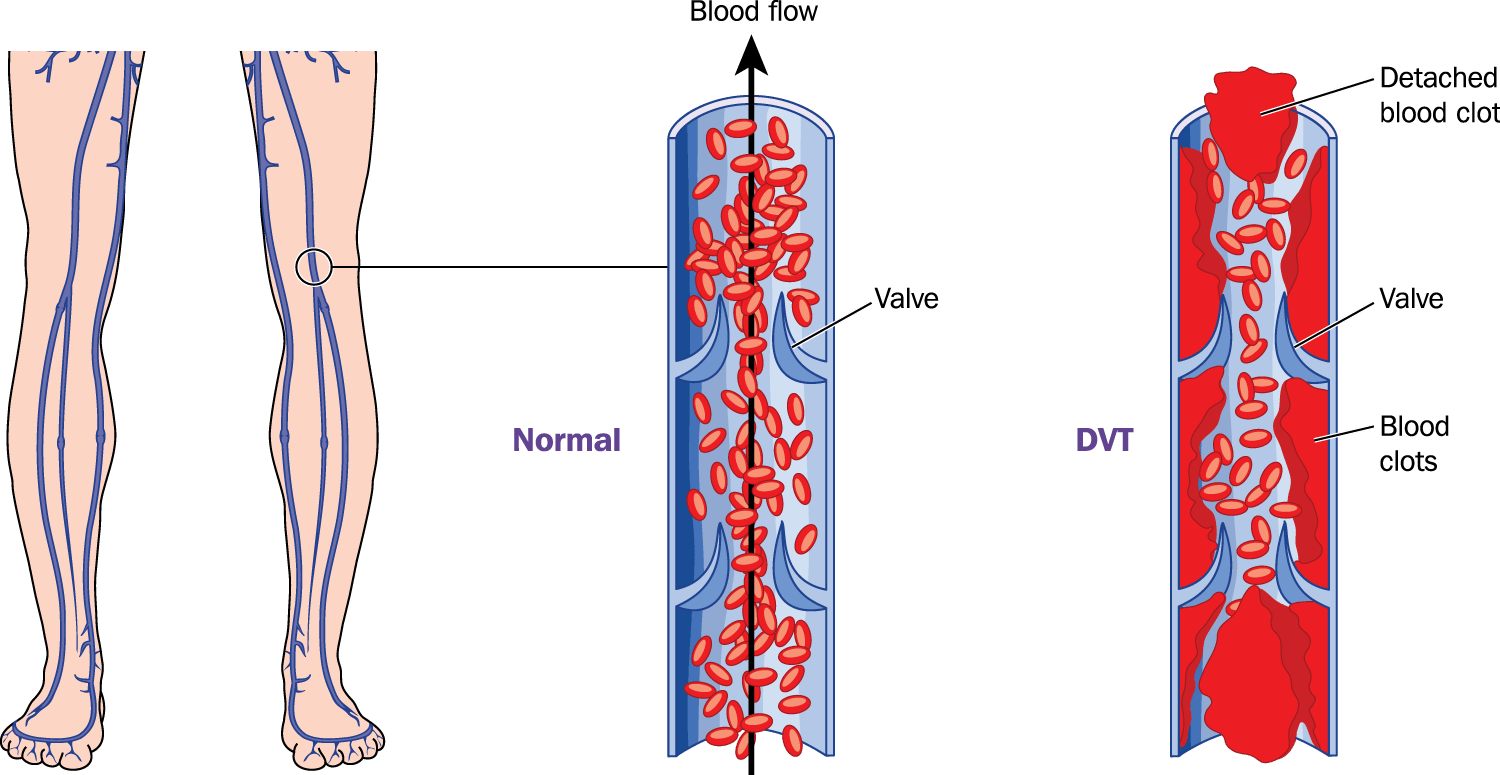Blog
What is deep vein thrombosis (DVT)?

Blood clots are the body's first aid against bleeding. They protect the flow of blood by plugging any leaks that form.
Without blood clotting, smaller vessels that hit a leak inside the body would keep bleeding. If clotting cannot help to seal cuts, the body loses blood from where it needs it - the tissues and organs.
This article explains the main clot disease involving the veins: Deep vein thrombosis (DVT).
Gel-like clumps of congealed blood can form in one of the veins deep in the leg. This is a deep vein thrombosis, or DVT.
DVTs usually occur in the far limbs - often the lower legs. They are also possible in the arms. DVTs in the leg can be deep in the calf of the lower leg, or in the thigh of the upper leg. Clots can also happen further up, in the pelvis.
Most of the DVTs that happen in the hospital to people at high risk are in smaller veins of the lower leg. These are usually without symptoms and may not be detected.
Deep vein clots are underdiagnosed but preventable conditions that can be serious.
Some diseases raise the chances of a DVT. Cancer is one example. Most cases of DVT happen in people:
- Whose blood cannot easily get back to the heart because they are unable to move
- Patients with damaged vein linings, including because of a broken bone or major muscle trauma
Arm DVTs are possible, though not common. They also happen due to damage to the lining of a vein. This can be caused by a catheter held in it, or from needle damage when injecting drugs.
It is natural for healthy people to worry about the possibility of a DVT due to other risk factors. Other factors have a part to play in far fewer cases than may be feared.
Clotting is more likely for some people sitting down for long periods on long-haul plane journeys. The contraceptive pill has also shown a link to the risk of DVT.
However, bigger risk factors for DVT include:
- Obesity
- Smoking
- Dehydration
- Previous clots
- Pregnancy
Symptoms of deep vein thrombosis
The following may be signs and symptoms of a deep vein thrombosis. For most DVTs, these are in the calf:
- Swelling
- Pain
- Tenderness
- Redness of the skin
- Warmness of the skin
The pain can feel like a pulled muscle or heavy ache. Whether or not the symptoms turn out to signal a DVT, they are problems that need the attention of a doctor as soon as possible.
Doctors will be able to investigate the full picture, do more tests, and get treatment started. They may look for more detailed signs of DVT, including:
- The location and amount of the swelling, and how this compares with the other limb
- How the tenderness relates to the form of the veins in the leg
- Other factors, including weighing up information to decide the risk of a DVT
Doctors will want to treat or rule out DVT based on other risks. These can include:
- Cancer or recent treatment of it
- Paralysis or partial paralysis
- A leg cast for a fracture
- Recent long-distance travel, including long-haul flights
Doctors look at the overall picture. Another risk they will take greater care over is that DVT is more likely in a patient who has recently been unable to move for more than a few days. Overall, the signs of blood clotting vary, so it is important to rely on doctors for diagnosis and management.
Quelle:
Medical News Today





